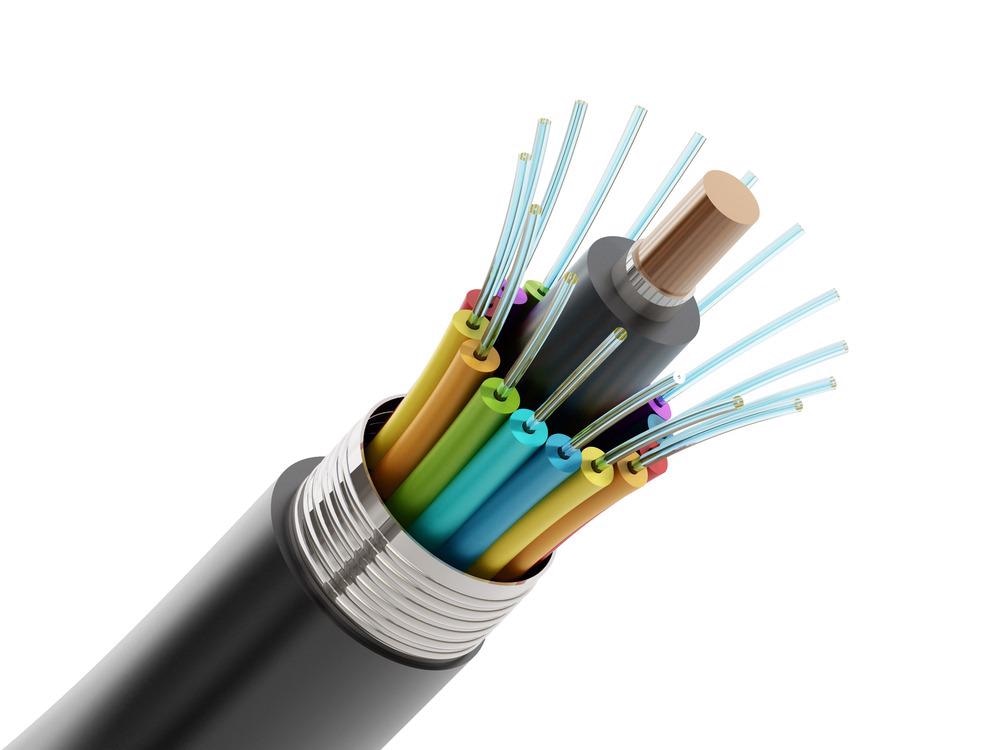Faster and more reliable, quantum key distribution using a hollow fiber optic cable could be the quantum communication system of the future.

Image Credit: cigdem/Shutterstock.com
Quantum key distribution (QKD) is a secure communication method that used elements of quantum mechanics like entanglement to create a cryptographic protocol. This allows two parties to create and share a random cryptographic key to encrypt and decrypt messages.
The key element of QKD is the fact that the two users, let’s call them Alice and Bob, can detect if an uninvited third party, Eve, has attempted to snoop on the message. This arises from the fact that quantum systems are disturbed, or destroyed even, by attempts to measure them.
How Quantum Keys Get All Tangled Up
QKD relies on entanglement, a quantum mechanical phenomenon once famously described by Einstein as “spooky action at a distance.” Entanglement involves the creation of two particles that are linked in such a way that a change in one instantaneously causes a change in the other. The “spooky” element of this for Einstein was that this instantaneous change occurs even if the particles are on opposite sides of the Universe.
The question is: how can this be applied to computer security?
For QKD, the entangled particles are photons that are given a specific polarization. In other words, the direction of their wavelength is orientated in a specific direction.
When the QCD quantum system is measured, the wavefunction collapses, and the values of its elements resolve. Two people send messages using a random quantum-generated key. They share this to encrypt and decrypt messages. The information is sent in an entangled state that resolves when the messengers measure it.
That means that they can tell if someone has snooped on their encrypted message, as anomalies will be introduced when the intruder tries to measure it in order to decrypt the message. For QCD, that means that the photons are orientated in a different direction for Alice and Bob.
Currently, the transmission of a quantum key, composed of millions of polarized light particles (photons) relies on the use of a fiber optic cable stretching from Alice to Bob. Along with this cryptography key is streamed the encrypted data that is to be decrypted.
Running through the center of this cable is a solid core of glass using different wavelengths of light to deliver high-capacity transmissions. With QKD systems, polarized and entangled photons require the use of a separate fiber. This is to reduce ‘crosstalk’ — an effect that causes the light from high-speed data channels to spread its wavelengths, interfering with a quantum signal carried over the same fiber. If not limited, this change in frequency can cause leaking light to seep into other channels.
Think of this as being similar to Alice and Bob attempting to hold a whispered conversation next to a speaker blasting rock music. It is difficult, if not impossible, for Alice to hear Bob’s voice over the music.
Further Reading: A Deep-Dive on Quantum Resilient Cyber Security
The UK telecom giant BT may have come up with a solution. They have been conducting the first trials of a hollow-core fiber cable for QKD.
What Are The Benefits of a Hollow Fibre Cable
Lacking an internal material means that the system, called Nested Anti-Resonant Nodeless Fibre (NANF) and developed by Southampton University oof-shoot Lumenisity Limited, has less light scattering and less crosstalk between channels, even at a single-photon level.
Think of this as introducing a wall between the speakers and Alice and Bob as they hold their hushed conversation. It allows both a high-speed encrypted data stream and the faint quantum signal that carries the encryption key, over the same fiber.
There was another advantage to the system tested by BT is that it could enable the use of QKD as a commercial telecommunications system without optimization to transmit a cryptographic key.
That means using equipment without modifications, preventing the adding complications that sending secure signals over standard fiber optic cables often entails.
Building Quantum Networks to Connect the World
Previous trials also conducted by BT have shown that the transmission of photons is more rapid through a hollow-core cable filled with air rather than a solid material like glass.
ZDNet reports that the difference in speed between hollow cables and solid cables can be as great as 50 percent.
Trialing a Revolutionary QKD System
BT began trialing its hollow fiber optics system over the summer at its BT Labs in Ipswich. The aim was to discover if the system could be used over a variety of situations, particularly for secure communications.
BT says that testing the six-kilometer-long cable of hollow-core fiber cable developed by Lumenisity was to address “the need for high-speed transactions and bandwidth increases in advanced communications systems, which has also been used for applications such as Data Centre Interconnects (DCIs), Edge and 5G xHaul.”
BT’s Head of Optical Network Research, Professor Andrew Lord, described the system as a milestone for BT with hollow-core fiber’s low latency and ability to send QKD over a single fiber with other signals representing a critical advancement for the future of secure communications.
Lord added that the development of the system could also help guarantee the UK’s place at the forefront of the global quantum technologies landscape.
References and Further Reading
BT conducts world’s first trial of quantum-secure communications over hollow-core fiber cable, BT Newsroom, [https://newsroom.bt.com/bt-conducts-worlds-first-trial-of-quantum-secure-communications-over-hollow-core-fibre-cable/]
Leprince-Ringuet. D., This fiber optic cable full of air could be the key to better 5G networks, ZDNet, [https://www.zdnet.com/article/this-fibre-optic-cable-full-of-air-could-be-the-key-to-better-5g-networks/]
Disclaimer: The views expressed here are those of the author expressed in their private capacity and do not necessarily represent the views of AZoM.com Limited T/A AZoNetwork the owner and operator of this website. This disclaimer forms part of the Terms and conditions of use of this website.